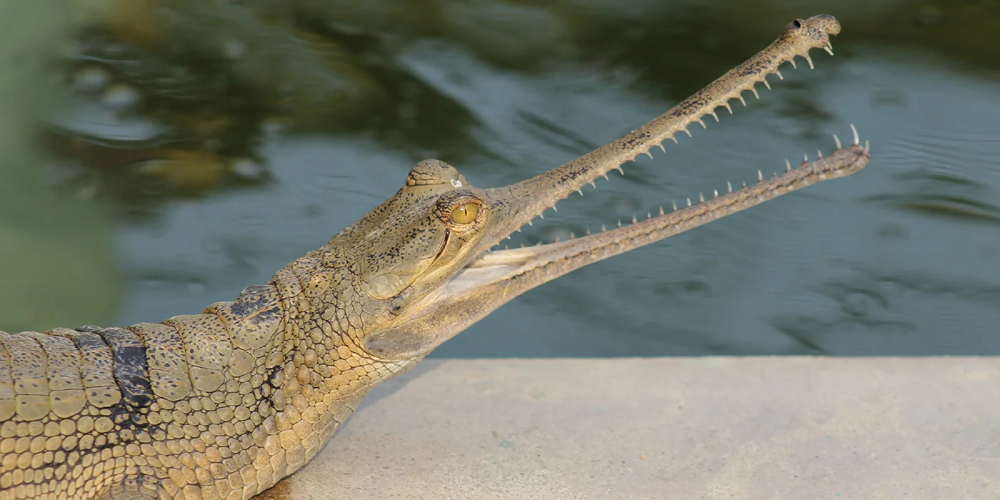The gharial (Gavialis gangeticus) stands as a testament to the incredible diversity of life on Earth. This fascinating reptile, with its long, slender snout and distinctive appearance, is native to the rivers of the Indian subcontinent. Often dubbed the “fish-eating crocodile,” the gharial is an apex predator crucial to the ecological balance of its habitat. In this article, we delve deep into the world of the gharial, exploring its biology, behavior, conservation status, and the challenges it faces in the modern world.
Biology and Appearance of Gharial
One of the most striking features of the gharial is its long, thin snout, which sets it apart from other crocodilians. This specialized adaptation is perfect for its piscivorous diet, enabling it to swiftly catch fish in its powerful jaws. The male gharial sports a distinctive bulbous growth on the tip of its snout, known as a ‘ghara,’ which is believed to play a role in communication and courtship displays.
In terms of size, adult gharials can reach impressive lengths, with males often growing up to 6 meters (20 feet) long, though females are typically smaller. Despite their formidable size, gharials are generally not considered a threat to humans, as they prefer to avoid confrontation and focus on hunting fish.

Habitat and Distribution
Gharials primarily live in the freshwater river systems of the northern Indian subcontinent, including the Ganges, Brahmaputra, Mahanadi, and Indus rivers. These habitats provide the ideal conditions for gharials, with ample prey and suitable nesting sites along the sandy riverbanks. However, habitat loss and degradation due to human activities, such as dam construction, agriculture, and pollution, have severely impacted gharial populations in recent decades.
Behavior and Reproduction of Gharial
Gharials are largely solitary animals, with adults typically maintaining territories along stretches of riverbank. They are most active during the daytime, basking in the sun to regulate their body temperature and conserve energy. Despite their solitary nature, gharials gather in large groups during the breeding season, which typically occurs during the dry season when water levels are low.
During courtship, male gharials engage in elaborate displays, vocalizations, and territorial battles to attract mates. Female gharials excavate nests in sandy riverbanks, where they lay their eggs in large clutches. After an incubation period of around 70 days, the hatchlings emerge and make their way to the water, where they are vulnerable to predation by birds, mammals, and other reptiles.
Conservation Status and Threats
Despite their long history on Earth, gharials are currently critically endangered by the International Union for Conservation of Nature (IUCN). The primary threats facing gharial populations are habitat loss, depletion of prey species, accidental entanglement in fishing gear, and pollution of their aquatic habitats.
Conservation efforts aimed at protecting gharials and their habitats are underway across their range. These efforts include habitat restoration projects, captive breeding programs, community-based conservation initiatives, and also increased enforcement of laws and regulations aimed at protecting gharials and their habitats.
Conclusion
The gharial is a unique and remarkable species that serves as a flagship for the conservation of freshwater ecosystems in the Indian subcontinent. So, as apex predators, gharials play a vital role in maintaining the health and balance of their aquatic habitats. By raising awareness, implementing conservation measures, and addressing the root causes of their decline, we can ensure that gharials continue to thrive in the wild for generations to come.









